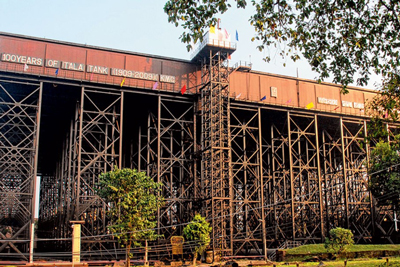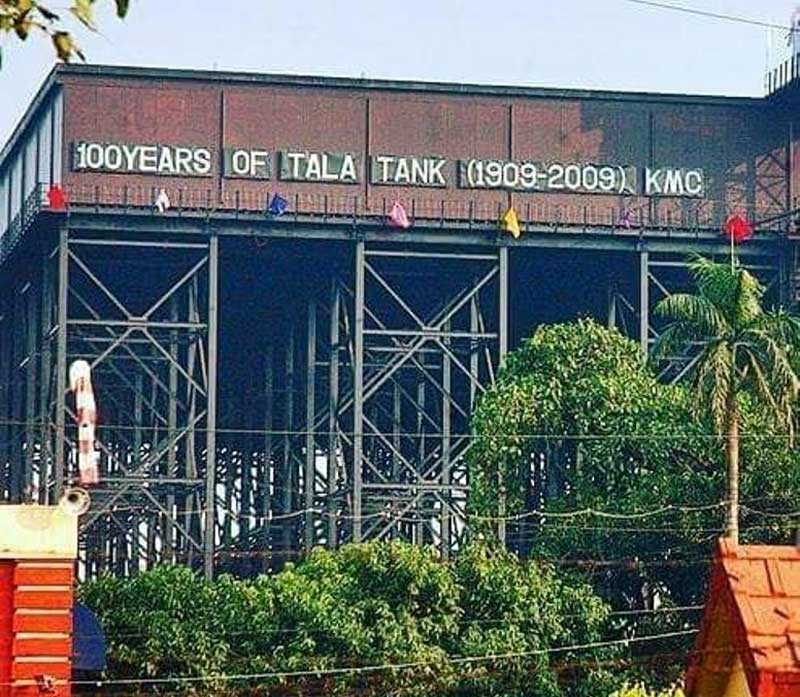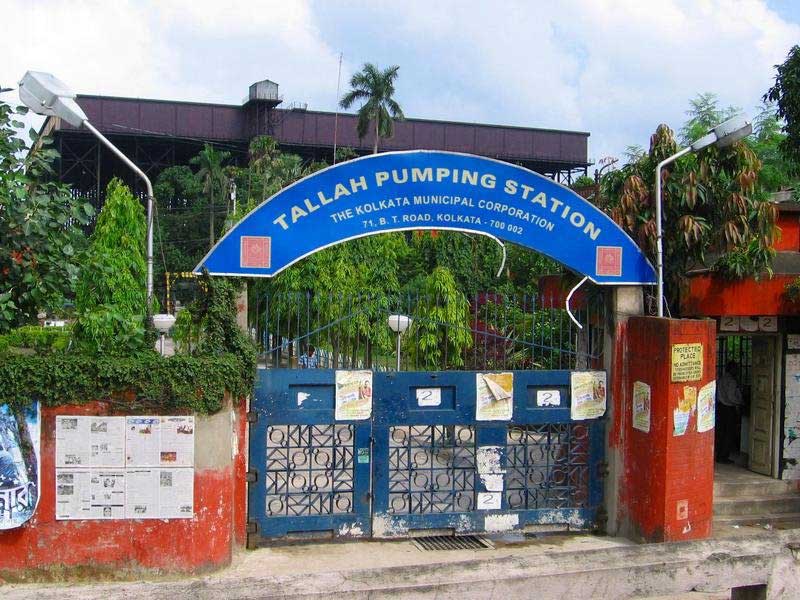
Standing at a height of 110 feet from its ground base and propped by steel columns and girders, the 16 feet deep Tallah Tank can hold nine million gallons of water and is considered as the world’s largest overhead reservoir. Spreading over 321 feet square, the tank is divided into four compartments which are independent of each other and hence can be cleaned or repaired in part, as and when needed, without disrupting the water supply of the city of Calcutta.
Before the construction of the Tallah Tank, Calcutta entirely dependent on its water bodies and the River Hoogly for its water supply. The Pulta water works began in 1868 on about 482 acres of land to supply filtered water to the residents of the city. From the Pulta water works, the filtered water was brought to Tallah Tank through a 42 inch cast iron pipe. At Tallah another pumping plant delivered the water partly to the domestic consumers and partly to another underground reservoir at Wellington Square, also equipped with a pumping station.
The land for the proposed reservoir was donated by Babu Khelat Chandra Ghosh of Pathuriaghat and subsequently an adjoining lane was named after him. The Tank was designed by WB MacCabe, the then chief engineer of Calcutta Corporation and Clayton, Son & Co of Leeds had been the contractor for the tank. Commissioned in August 1907, the work was completed two years later, in 1909. For the construction, special anti-corrosive plates were shipped from the UK, while fabrication was done at the site. It was inaugurated on 18 November 1909, by Sir Edward Baker, Lt Governor of undivided Bengal, in the presence of A Earle, the then Chairman of the Corporation, as well as an officer of the erstwhile Indian Civil Service.

The unique feature of the tank is that, no separate sets of pipelines were used in it for the filling up and the delivery of water. The feeding pipe is also used for delivery. As a result, the overhead tank serves the role of a balancing tank. As and when the underground tank at Tallah is spilled over with the incoming supply from Pulta water works, the surplus water is stored in the overhead tank. On the other hand, when the water level in the underground tank dwindles, it compensates for the loss due to distribution.
The massive Tallah Tank is an amazing structure. During its existence of 104 years, it developed leakages only 14 times till date and despite widespread apprehensions of its collapse, it has withstood the World War II and the great earthquakes of 1934 in Bihar and Bengal.
